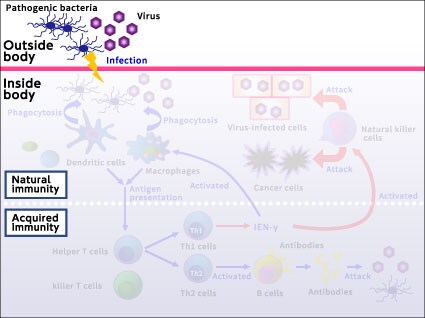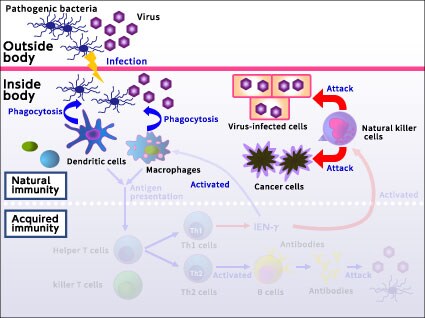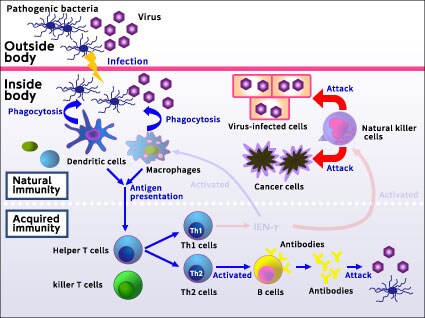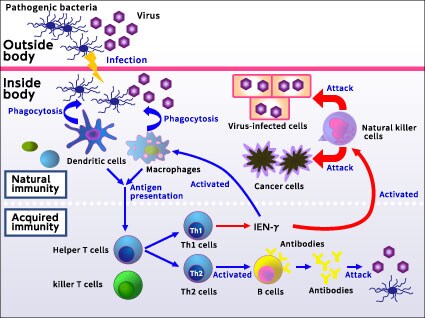
Immune mechanism
(1)
When bacteria and viruses enter the body, the nasal hair, mucosa, and skin serve as the primary barriers to block their advance. However, some bacteria and viruses may penetrate these barriers and enter the body.

(2)
When bacteria and viruses succeed in getting inside the body, the innate immune system is there to rapidly respond to the intruders. The innate immune system immediately detects and attacks any foreign antigens*1 that enter the body. As for the NK cells that form an important part of the innate immune system, they are natural born killers as the name indicates. NK cells are able to quickly notice any virus-infected cells, cancer cells, and other abnormal cells and dispose of them. Meanwhile, phagocytes such as macrophages and dendritic cells are able to capture inside their own cells any antigens such as bacteria and viruses as well as dust and other foreign particles and neutralize them with enzymes. Cytokines are another key component of the innate immune system, as they convey cell signals between the innate and acquired immune systems.
*1: Bacteria, viruses, etc. that trigger an immune response in the living body.

(3)
No matter how hard the innate immune system works by engulfing and destroying incoming antigens, not all of them can be eliminated. That’s when the acquired immune system kicks in. The acquired immune system is activated when antigens are presented by macrophages and dendritic cells (which are called antigen-presenting cells).
In the acquired immune system, T cells are like an elite squad of immune cells. They are like special mercenaries trained to defeat strong pathogens. There are several different types of T cells. Killer T cells destroy virally infected cells and cancer cells by binding to them. Meanwhile, helper T cells assist in enhancing immune strength, by commanding B cells to produce antibodies (Th1 and Th2 cells are subgroups of helper T cells). If these cells continue with their immune responses even after unwanted intruders are neutralized, that could harm the body they are intended to protect. Therefore, regulatory T cells come in to end the immune reactions. B cells secrete antibodies that are suitable for attacking each targeted antigen type.

(4)
Another function of the immune system is to activate cells that attack pathogens. For example, IFN-γ (interferon gamma) secreted by Th1 cells activates macrophages and NK cells, thereby improving the host’s immune strength.
(For more information, please visit the section describing the results of our study on the 1073R-1 lactic acid bacterium that activates NK cells.)
















